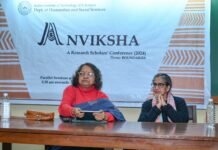The scientists at the Indian Institute of Technology Kanpur (IIT-K) have developed a real-time de-hazing method. This would solve a major problem faced by the Indian Railways in ensuring timely and accident-free running of trains during dense fogs.
The new de-hazing system would increase visibility in hazy and foggy weather conditions.
The new method can be critical in vision-assisted vehicle navigation in hazy and foggy weather, surveillance in bad weather conditions and can play an important role in aviation, biomedical processes like MRI and CT scan, and computer vision applications according to the developers Saumik Bhattacharya and Himanshu Kumar, former PhD students under the guidance of Dr. K. S. Venkatesh and Dr. Sumana Gupta, at the Department of Electrical Engineering at the Institute.
The system allows “better visibility from a single view without using any prior knowledge about the outdoor scene” claimed the young scientists.
Though other de-hazing methods existed, but the one developed by IITK researchers is more effective and less time-consuming. The existing methods increase the contrast of an image but remove many details of structural information after processing. Those methods also introduce severe color range suppression in the processed image and show a drop in performance in conditions of dense fog.
The IITK research team claims that their method outperforms the existing methods in most of the cases.
For online, real-time processing of flawed images, processing time plays a key factor. The proposed de-hazing model gives a low time complexity compared to other state of the art methods.
The team observed after comparing the time lapse with other methods that the proposed method provides a speed approximately 6 times faster than existing methods in commodity hardware. Besides, unlike certain multi spectral solutions available in the market that are enormously expensive, this will be available at a very low cost said Saumik Bhattacharya.












This will solve major problem of railway during fog
Comments are closed.